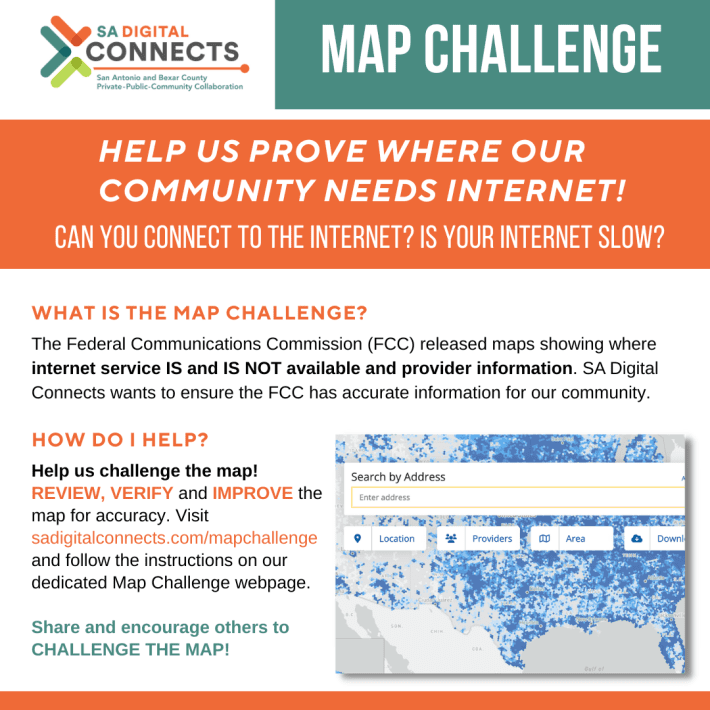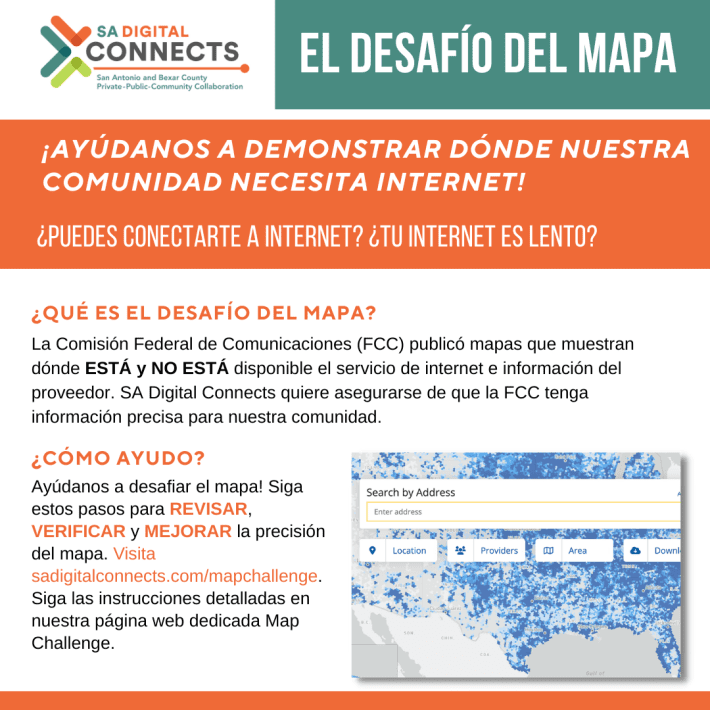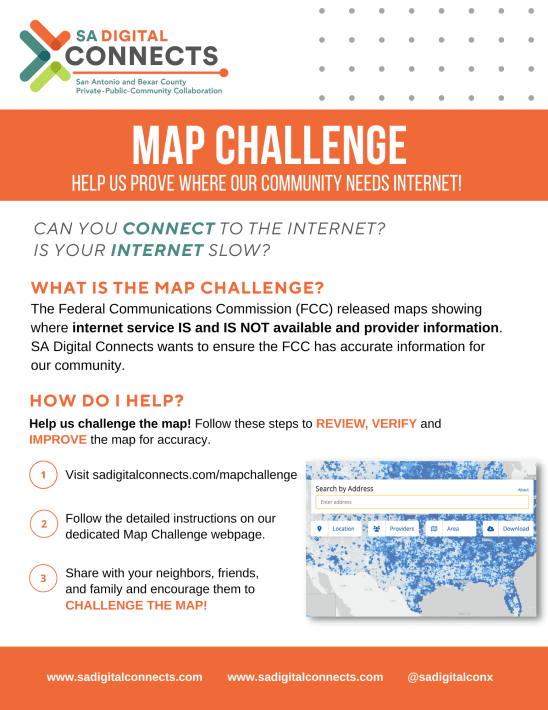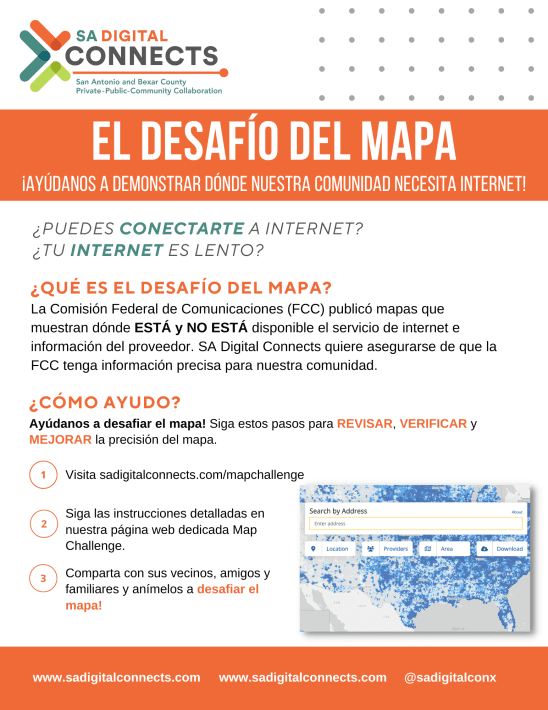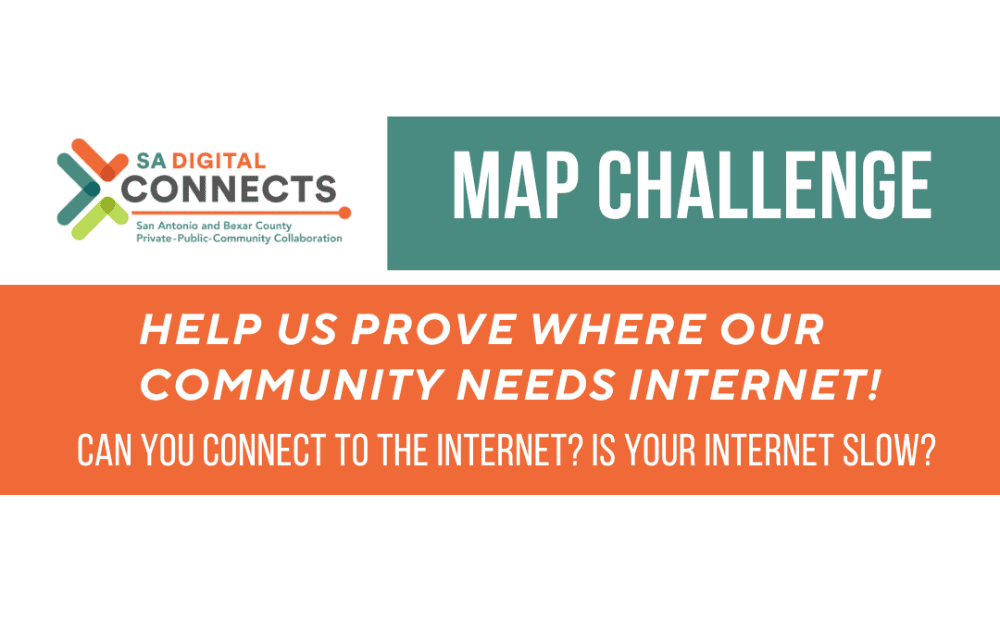To bolster rural, poor, and underserved communities, the Infrastructure Investment & Jobs Act provides $42.5B in Broadband Equity, Access and Deployment (BEAD) funding. The Digital Equity Act provides $2.75B for digital equity and inclusion. Broadband connectivity is a precondition of sustained growth (1), economic, community and workforce development in the 21st century. New Federal Communications Commission (FCC) granular broadband fabric maps released November 18 show Texas may be eligible for up to $5.5B from the federal government.
The recent FCC broadband fabric maps may not correctly identify who is connected, who is not, and the quality of connections for those that have a connection. This is a problem because if unchallenged before January 13, Texas communities with the greatest need — and greatest opportunity — may miss out on unprecedented broadband investment. Communities that take steps to challenge inaccurate fabric map data could receive a greater, more appropriate and expeditious portion of the estimated $5.5B allotted to Texas.
Broadband is not regulated like utilities are; in past decades it has been difficult for communities to know with certainty which entities and households are serviceable. In 2017, the National Digital Inclusion Alliance conducted the first in a series of studies exposing “digital redlining.” (2, 3, 4) In June, 2021 the FCC established a Communications Equity and Diversity Council which has just released its first report on Digital Discrimination. Also in 2021, the FCC required internet service providers to hand over address-level broadband service data – a new “fabric” for understanding who is connected. The first fabric maps are a data set of all “broadband serviceable locations” in the U.S. The fabric maps are an improvement on old maps, but as the first they are widely acknowledged to be imperfect. Harris County, Fort Worth, Caldwell and other Texas counties are working to challenge the maps by securing existing data from open and commercial sources and asking residents and institutions to provide information. (5, 6)
State of Texas Broadband Development Office
In the 87th Legislature House Bill 5 established a Broadband Development Office at the Texas Comptroller of Public Accounts. (7, 8) House Bill 5 will be updated in the 88th Legislature. Anchor institutions (schools, libraries and hospitals), social services and advocacy organizations, as well as internet service providers, are following possible changes to HB5.
In Texas, the Broadband Development Office (BDO) established a State Broadband Plan in June, 2022. The BDO is developing a State Digital Equity Plan in accordance with NTIA requirements. The BDO is developing its own map, which must be published by the end of January, 2023; there will be a challenge process and rounds of refinement. The BDO will award federal grants and state funds, if they are allocated to the BDO. The BDO has identified several possible state funding sources that could augment federal NTIA funds. Per the NTIA, all unserved locations will be served first, then all underserved locations can be served. Grants can be awarded to both unserved and underserved locations at the same time. While the BDO has not received funds of any kind, program rules and application guidelines have been published.
Some states have already submitted challenges. (9, 10, 11, 12) The Broadband Development Office can describe Texas’ efforts in detail.
In Texas, a community is unserved if 80% or fewer locations in a location have less than a 24Mbps download, 3Mbps upload (also called 25×3). An underserved location is one in which 80% or fewer locations have less than 100Mbps download by 20Mbps upload speed. I believe a location is defined as a Census tract, however the BDO can provide more detail.
